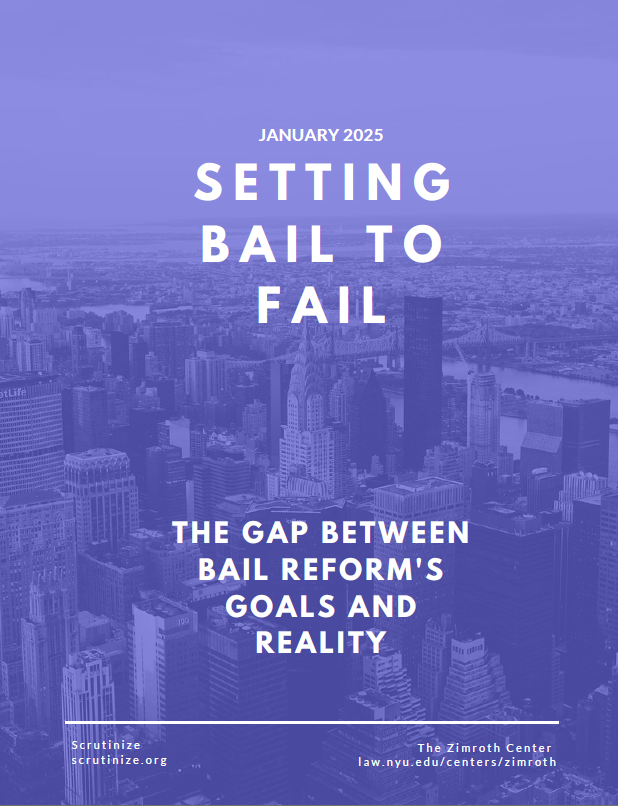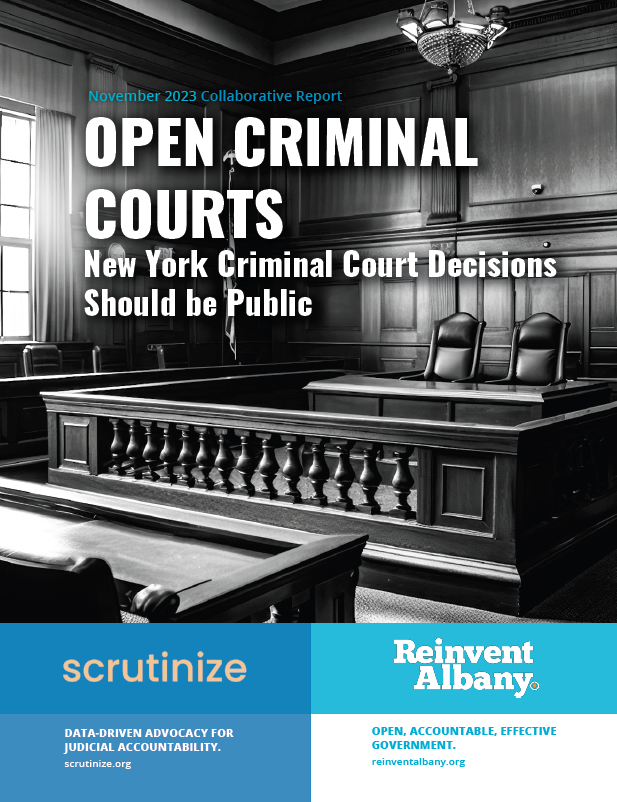Our Work
A small group of judges and counties leads the way in publishing decisions, demonstrating that open justice is possible—even as many decisions are not published online.
Analysis of nearly 300 unpublished discovery decisions reveals that case dismissals result from prosecutorial failures—not minor technicalities or defense tactics.
Judges followed rules requiring specific bail options but often set amounts that undermined the statutory intent to provide affordable alternatives, particularly to commercial bonds.
Scrutinize and the Cornell Law School First Amendment Clinic filed a FOIL request with the NYC Mayor’s Office seeking records on members of the Mayor’s Advisory Committee on the Judiciary, including appointment details, evaluation guidelines, and reappointment criteria since 2000.
Scrutinize and the Cornell Law School First Amendment Clinic submitted a FOIL request to the Governor’s Executive Chamber seeking records on Judicial Screening Committee members since 2000, including appointment details, evaluation guidelines, and candidate statistics.
Scrutinize and the Cornell Law School First Amendment Clinic filed a FOIL request with New York’s Office of Court Administration seeking records on all judges designated as Acting Supreme Court Justices since 2010, including appointment dates, evaluation criteria, and panel member names.
Scrutinize and the Cornell Law School First Amendment Clinic submitted a Freedom of Information Law (FOIL) request to New York’s Office of Court Administration seeking a full list of sitting judges, their court assignments, terms, and salaries.
A new metric for assessing individual judges’ decisions and impacts: failure to protect constitutional rights against law enforcement overreach.
This factsheet introduces a new method for enhancing judicial transparency using large language models (LLMs) to analyze judicial texts.
We strongly support this bill because it will streamline NYS court filing, increase transparency, and save taxpayer dollars.
Scrutinize announces the launch of Judicial Profiles, an online platform providing comprehensive profiles of New York judges.
A new metric for assessing individual judges’ decisions and impacts: reassignments to a Different Judge (RDJs), which serve as a red flag, suggesting the possibility of judicial impropriety that goes beyond getting the law wrong.
A new metric for assessing individual judges’ decisions and impacts: exceptionally punitive sentences, so severe that even appellate judges could not uphold them.
Our groups support this bill because robustly funded ethics oversight agencies are the first line of defense against corruption, misconduct, and the abuse of public trust.
Today, on behalf of Scrutinize, the New York Civil Liberties Union and the Harvard Law School Cyberlaw Clinic submitted Freedom of Information Law (FOIL) requests…
At most 6% of New York’s written criminal court decisions are available to the public online.
The decisions of NYC most carceral judges resulted in appx. 580 additional people detained and $77 million in taxpayer costs.
















